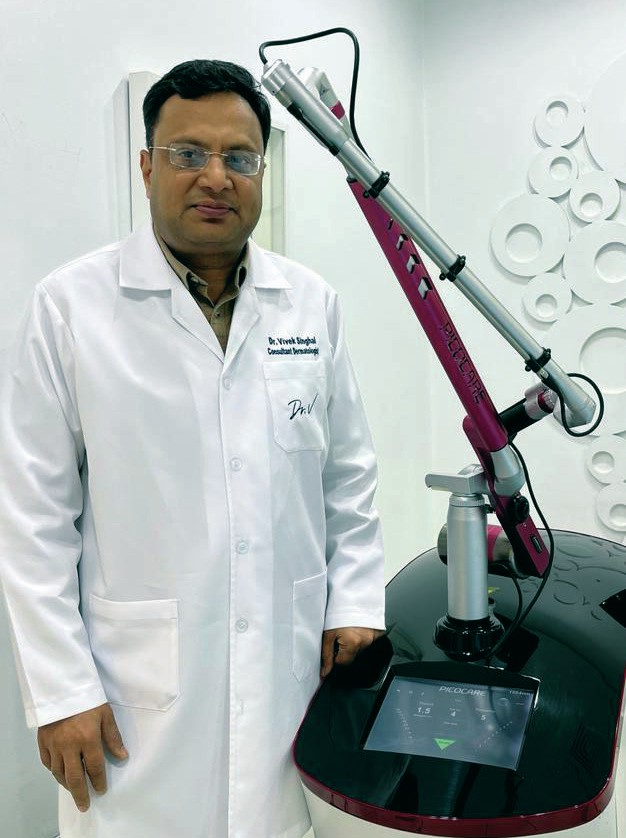TATTOO REMOVAL

Dr Vivek Singhal
“Picosecond lasers can cover practically all tattoo colours.”
Dr Vivek Singhal, Consultant Dermatologist, 09 Clinic, Kuwait
Tell us about some of the challenges associated with tattoo removal.
Tattoos come in various types, which can affect the laser treatment outcome. Certain features of the tattoo, such as number of colours and whether it was professionally done, are readily apparent during clinical examination. However, factors like ink quality and depth of placement only become apparent after a few laser sessions. Additionally, a host of factors such as the ability to clear tattoo ink further contribute to variations in laser results. To ensure the best outcome, it is advisable to perform a test patch on the tattoo before proceeding with a full laser session.
How do picosecond lasers compare to other laser systems for tattoo removal, and what advantages do they offer in terms of efficacy, safety, and patient comfort?
Until recently, Q-switched lasers were the only option available for tattoo and pigmentation removal. However, the advent of picosecond lasers with their shorter pulse duration has revolutionised the process, making it faster, less painful, and more efficient. Our own Picocare laser has allowed us to remove black and brown tattoos in six to seven months, a Before After significant improvement over the year or more it used to take with our Q-switched NdYAG laser. We have also noticed that patients experience less pain, shorter duration and lesser number of sessions with the picosecond laser. In fact, after introducing the Picocare laser to our practice, we saw marked improvements in outcomes and patient satisfaction as compared to Q-switched lasers.
How do you consult patients about the importance of multiple treatments for tattoo removal, and what kind of strategies do you use to optimise outcomes?
The number of laser sessions required to remove a tattoo varies depending on multiple factors, such as the type of ink and others. We cannot provide a definite count of the number of sessions required, but we usually provide a range. After doing a test patch and the first two sessions, we can better assess the expected outcome and provide more information about the number of sessions required. In some cases, we may combine the picosecond laser with fractional thulium or fractional CO2 lasers to improve the outcome and make the tattoo removal process faster. Combining the picosecond laser with fractional lasers has shown to be effective for some patients who have stopped responding to the picosecond laser alone.
What are some of the unique challenges associated with removing tattoos in sensitive areas?v
Sensitive areas require gradual power increase, and a test patch with different strengths can help determine the effective power for each case. Cooling with ice or a Zimmer air cooler can reduce complications. Although the Picocare lasers are costly, they set higher standards for your practice and provide an edge over competitors. With four different wavelength options, Picocare lasers can cover practically all tattoo colours and can be used for different types of pigmentations. A patient referred to me after six sessions of Q-switched NdYAG laser with little improvement due to their primarily green colour in tattoo. We started with the Picocare laser with two wavelengths, and after six sessions, the patient is satisfied with the outcome.